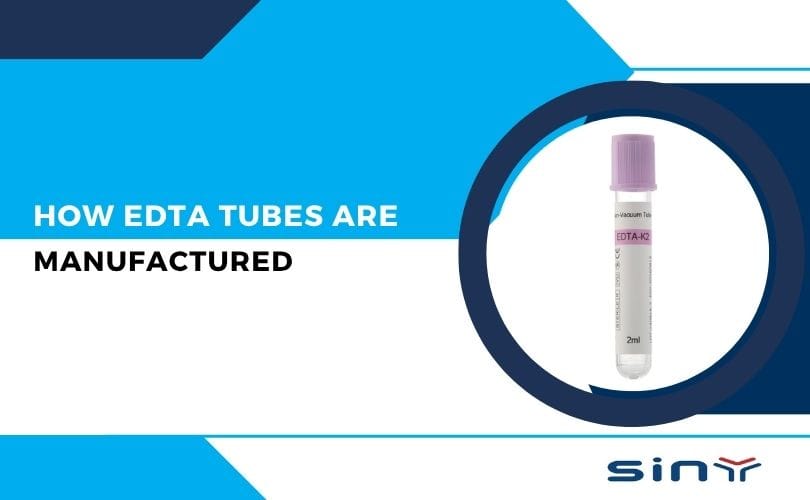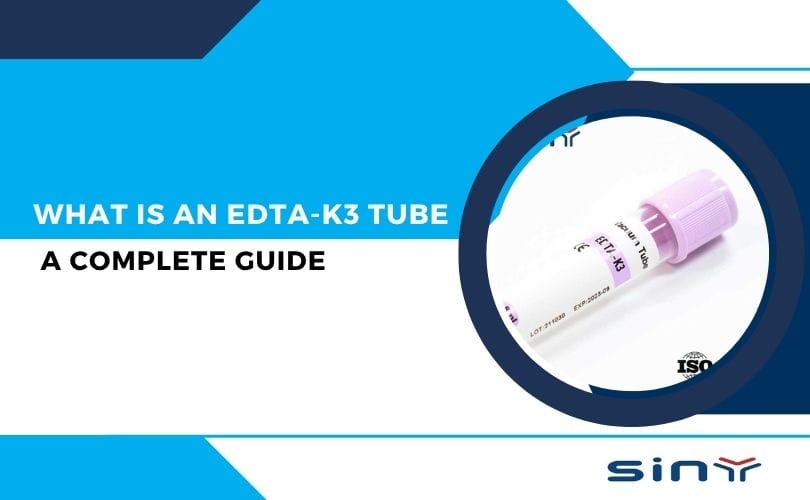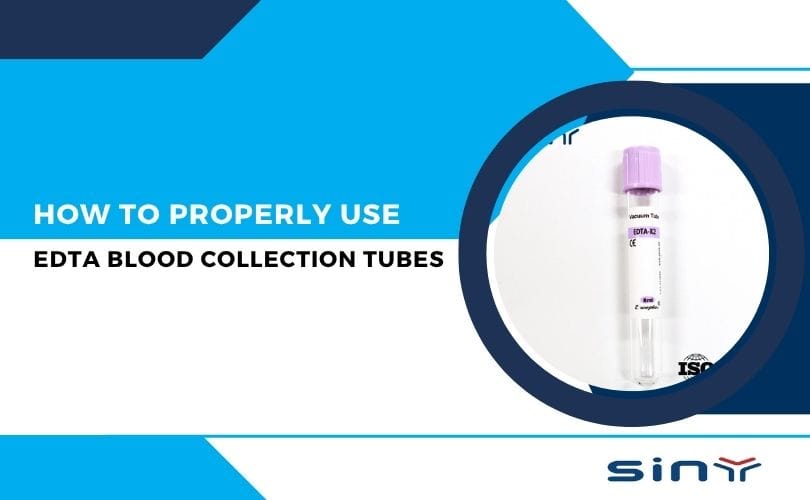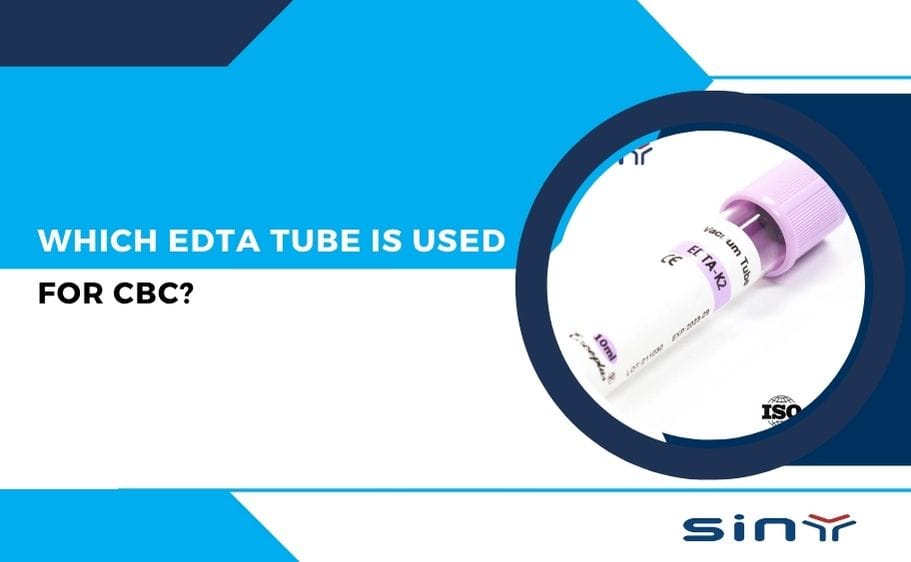EDTA tubes, often recognized by their lavender or purple caps, are specialized blood collection tubes pre-coated with Ethylenediaminetetraacetic acid (EDTA). This chemical prevents blood from clotting by binding calcium ions, making these tubes vital for hematology tests like Complete Blood Count (CBC).
Want to learn more about how EDTA is used in CBC testing? Check this resource.
EDTA tubes are essential for:
Preserving blood cells for accurate analysis
Preventing clotting without affecting cell structure
Supporting reliable diagnosis in hospitals and labs
To dive deeper into EDTA’s function in preserving samples, here’s a great read: Why EDTA Preserves Blood Samples Accurately
. In this article, we’ll take you deep behind the scenes to understand how EDTA tubes are manufactured, what materials go into them, and how precision processes guarantee safety and accuracy in every tube.
What Are EDTA Tubes?
Before diving into manufacturing, let’s briefly recap what EDTA tubes are and why they’re important.
EDTA (Ethylenediaminetetraacetic acid) is an anticoagulant that prevents blood clotting by binding calcium ions. These tubes are primarily used for CBC (Complete Blood Count) tests and other hematological analyses.

There are two main types:
- K2 EDTA tubes (liquid form)
- K3 EDTA tubes (spray-dried form)
Learn more about K3 EDTA Blood Collection Tubes and their applications..
The Manufacturing Process of EDTA Tubes
The production of EDTA tubes involves multiple stages, each requiring strict adherence to medical-grade standards. Below is a step-by-step breakdown:
Selection of Raw Materials
The first step is sourcing high-quality materials:
- Glass or Plastic Tubes: Most modern EDTA tubes are made from PET (Polyethylene Terephthalate) plastic, which is shatterproof and lightweight.
- EDTA Anticoagulant: Either K2 EDTA (liquid) or K3 EDTA (spray-dried) is used.
- Tube Caps: Made from rubber or synthetic materials, often color-coded (purple for EDTA).
For more details on EDTA tubes for blood collection, visit our product page.
Tube Molding & Formation
The tubes are formed using injection molding (for plastic) or glass-blowing techniques (for glass tubes). The process ensures:
- Uniform thickness
- Smooth interior to prevent hemolysis
- Precise volume markings
Coating with EDTA
The inner walls of the tubes are coated with EDTA anticoagulant:
- K2 EDTA: A liquid solution is sprayed and dried inside the tube.
- K3 EDTA: A spray-dried powder is evenly distributed.
This step is crucial—too little EDTA leads to clotting, while too much can distort test results.
Quality Control & Sterilization
Every batch undergoes rigorous testing:
- Volume Accuracy: Ensures the correct fill level.
- EDTA Concentration: Verified via chemical assays.
- Sterility Testing: Tubes are irradiated or autoclaved to eliminate contaminants.
For more on quality standards, explore EDTA Tube Manufacturing at Sinymedical.
Assembly & Packaging
The final steps include:
- Capping: Secure sealing to prevent leakage.
- Labeling: Barcodes, batch numbers, and expiry dates are printed.
- Packaging: Tubes are packed in sterile, tamper-proof boxes.
Check out EDTA Tubes for Blood Collection for industry-grade products.
Quality Control in EDTA Tube Manufacturing
Manufacturing EDTA tubes isn’t just about production—it’s about precision quality. Every batch undergoes strict quality assurance tests such as:
Leakage testing
Vacuum consistency checks
EDTA volume verification
Sterility assurance (using Gamma radiation or EO sterilization)
To explore trusted manufacturers, check out Siny Medical’s EDTA Tubes for Blood Collection.
Every test must comply with global standards like ISO 13485 and CE certification, which are non-negotiables in the medical industry.
Packaging and Sterilization Process
Once the tubes are sealed and tested, they’re sent to sterilization chambers. The two main methods used are:
Ethylene Oxide (EO) Sterilization: For sensitive materials
Gamma Irradiation: Preferred for deep and uniform sterilization
After sterilization, the tubes are:
Batch labeled with tracking codes
Shrink-wrapped or box-packed
Date stamped for shelf life traceability
Explore packaging options here: EDTA Tubes Packaging & Supply
Global Market Demand and Manufacturing Scale
According to recent reports, the global market demand for blood collection tubes is booming. In 2024 alone, it’s projected to surpass $2.5 billion, with EDTA tubes contributing over 30% due to their crucial role in diagnostics.
Manufacturers like EDTATube.com cater to this demand with massive production capacities and international certifications.
Behind-the-Scenes: Inside a Tube Factory
Ever wondered what a real-life factory looks like?
Companies like Siny Medical and EDTATube.com have streamlined processes featuring:
Fully robotic tube production lines
Cleanrooms for coating and sealing
Quality inspection booths with AI-based systems
Automated packaging and dispatch
Summary
The manufacturing of EDTA tubes is a highly controlled process involving precision engineering, strict quality checks, and sterile packaging. These tubes play a vital role in medical diagnostics, ensuring accurate blood test results.
For high-quality EDTA tubes, explore our EDTA Tube Collection or contact us for inquiries.
For more insights, check out Sinymedical’s YouTube and their Made-in-China profile.
FAQs EDTA Tube Manufacturing
What does EDTA stand for?
EDTA stands for Ethylenediaminetetraacetic acid, a powerful anticoagulant that binds calcium to prevent blood clotting.
What is the shelf life of EDTA tubes?
Typically, EDTA tubes have a shelf life of 18 to 24 months, depending on the manufacturer and storage conditions.
What are the color codes of EDTA tubes?
They are mostly lavender or purple-capped to differentiate them from other anticoagulant tubes.
Can EDTA tubes be reused?
No, all EDTA tubes are single-use only and must be properly discarded after blood collection.
Where can I buy quality EDTA tubes in bulk?
Visit EDTATube.com for wholesale and distribution options.






